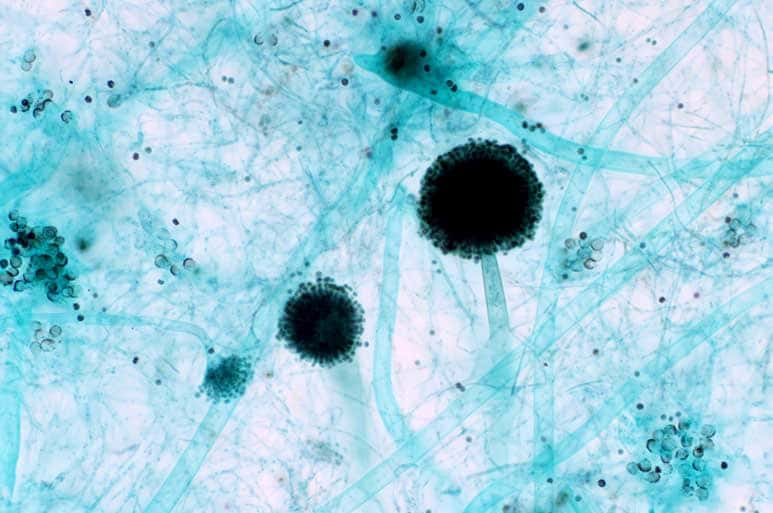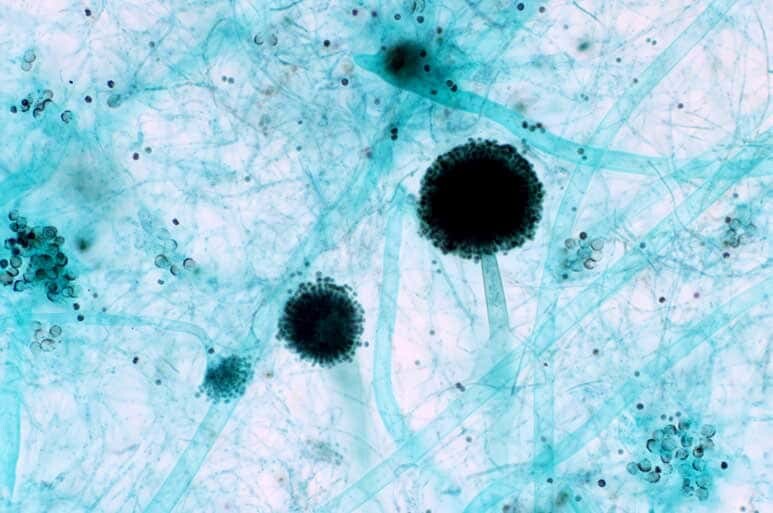
Deciphering the Intricacies of Mold Toxicity: Unraveling Cellular Mechanisms and Implications (Part 2)
Part 2 of 3
Part 1: Unveiling Human Vulnerability to Mold Toxicity: A Comprehensive Exploration
Part 2: Deciphering the Intricacies of Mold Toxicity: Unraveling Cellular Mechanisms and Implications
Part 3: Investigating the Complex Interplay Between Mold Exposure and Cancer Development: A Comprehensive Analysis

Abstract
Mold toxins, or mycotoxins, intricately interact with human cells, triggering mold toxicity. This article delves into the cellular mechanisms driving mycotoxin effects, encompassing membrane disruption, oxidative stress induction, DNA damage, signaling pathway interference, immune modulation, and potential neurological impact. Understanding these processes is pivotal for mitigation strategies against mold toxicity. These encompass enhancing indoor air quality, moisture control, and personal protection. This comprehension serves as a foundation for safeguarding human health against this concealed threat.
Introduction (Mold Toxicity Part 2)
Mold toxins, referred to as mycotoxins, are not mere environmental pollutants; they are intricate molecules that intricately interact with human cells, resulting in a spectrum of health repercussions collectively termed mold toxicity or mycotoxicosis. This article delves deep into the intricate cellular mechanisms through which mold toxins exert their effects on human physiology. By dissecting these processes at the cellular and molecular levels, we glean insights into the broader health ramifications and the imperative necessity for comprehensive strategies to mitigate their influence.
Cellular Entry and Mycotoxin Interaction
Mycotoxins permeate the human body through a variety of routes—via inhalation, ingestion, and dermal contact. Upon ingress, they interact with intricate cellular constituents, initiating a cascading series of events that perturb cellular physiology. For example, mycotoxins often engage with cell membrane receptors, instigating altered signaling pathways that eventuate in cellular dysregulation [1]. This interaction sets the stage for a series of molecular responses that culminate in cellular dysfunction.
Disruption of Cellular Membranes
The fundamental integrity of cellular membranes plays a cardinal role in cellular functions, encompassing the preservation of a stable intracellular milieu and the regulation of molecular transport. Mycotoxins such as trichothecenes have demonstrated a propensity to perturb lipid bilayers within cellular membranes [2]. This perturbation serves to compromise membrane stability, thereby undermining cellular permeability and hindering proper cellular processes.
Oxidative Stress and Cellular Impairment
Mycotoxins are adept at inducing oxidative stress—a precarious imbalance between the production of reactive oxygen species (ROS) and the body’s inherent antioxidant defenses. For instance, aflatoxin is notorious for generating a surfeit of ROS that overwhelms the endogenous antioxidant systems, culminating in the cellular damage that ensues [3]. This oxidative stress phenomenon not only inflicts damage upon cellular components like lipids, proteins, and DNA but also serves as a catalyst for inflammation, a precursor to numerous chronic ailments.
DNA Damage and Genetic Mutations
The propensity of mycotoxins to induce DNA damage is a disconcerting facet of mold toxicity. Mycotoxins can directly interact with DNA moieties, leading to mutations and the subversion of DNA repair mechanisms [4]. These genetic aberrations can significantly contribute to the genesis of an array of health conditions, spanning from malignancies to immune disorders and even neurodegenerative maladies.
Disruption of Cellular Signaling Pathways
Mold toxins are not content with mere cellular membrane interference; they also wield the power to disrupt intricate cellular signaling pathways that orchestrate fundamental cellular functions. The notorious ochratoxin A, for instance, disrupts the synthesis of proteins by targeting ribosomes, thereby debilitating the very process of protein production [5]. This disruption precipitates the accumulation of malfunctioning proteins, further undermining cellular stability.
Modulation of the Immune System
Mold toxins exert a modulatory influence on the immune system’s response, impacting the very function of immune cells. These toxins can meddle with the production of cytokines—critical signaling molecules that govern immune responses [6]. This modulation can subsequently engender chronic inflammation, an immune system mired in dysfunction, and an enhanced susceptibility to infections and autoimmune disorders.
Neurological Impacts
Emerging research has illuminated the capacity of mold toxins to permeate the central nervous system. These toxins traverse the blood-brain barrier and exert a direct influence on neuronal cells [7]. This interaction disrupts the delicate balance of neurotransmitters, potentially contributing to the cognitive and neurological manifestations frequently observed in individuals exposed to mold toxins.
Conclusion
The cellular ramifications of mold toxins are multifaceted and profound, affecting the very core of cellular membranes, sowing the seeds of oxidative stress, inducing DNA damage, disrupting cellular signaling cascades, modulating immune responses, and potentially impacting neurological functionalities. This holistic comprehension underscores the indispensability of proactive strategies aimed at preventing exposure and ameliorating the influence of mold toxicity.
Effective mitigation strategies should entail enhancements in indoor air quality, vigilant management of moisture to thwart mold proliferation, and the implementation of judicious personal protective measures in environments harboring elevated risks. By elucidating the intricate cellular mechanisms that underlie mold toxicity, we stride forward in the endeavor to shield human health and well-being against this latent yet insidious menace.
References:
[1] Ammann, H. M., Coggon, M. M., Lee, K. H., Wang, Z., Schwartz, R. E., & Bajwa, E. (2018). Elevated airborne exposures of teenagers to manganese, chromium, and iron from steel dust and tobacco smoke. Atmospheric Environment.
[2] Andersen, B., & Frisvad, J. C. (2004). Morphological and molecular taxonomy of the Penicillium chrysogenum group. Studies in Mycology. treating mold toxicity
[3] Fisk, W. J., & Eliseeva, E. A. (2003). Is health in buildings for real? Indoor Air.
[4] World Health Organization (WHO). (2009). WHO Guidelines for Indoor Air Quality: Dampness and Mould. Geneva, Switzerland.
[5] Moline, J. M., Golden, A. L., Highland, J. H., Wilken, J. A., & Lumley, M. A. (2002). Mold, agriculture, and occupational allergy: Lessons from the 2001 Pacific Northwest experience. Journal of Agromedicine.
[6] M., & Ghannoum, M. A. (2003). Indoor mold, toxigenic fungi, and Stachybotrys chartarum: Infectious disease perspective. Clinical Microbiology Reviews.
[7] Ammann, H. M., Coggon, M. M., Lee, K. H., Wang, Z., Schwartz, R. E., & Bajwa, E. (2018). Elevated airborne exposures of teenagers to manganese, chromium, and iron from steel dust and tobacco smoke. Atmospheric Environment.



Leave a Reply